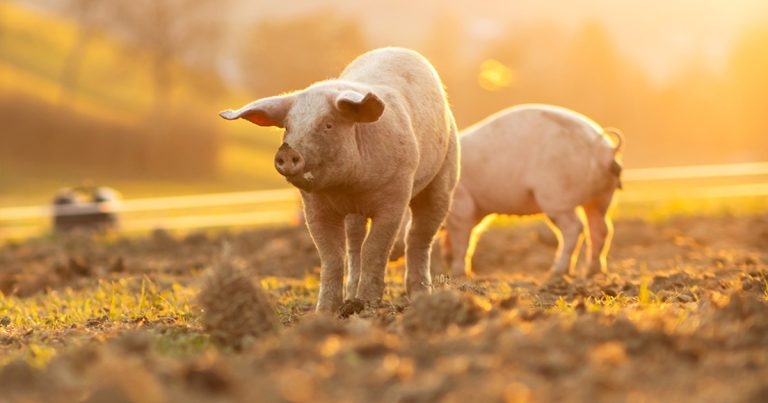29 Oct 2025
Report reveals considerable savings potential by increasing livestock vaccination rates.

Image @ lightpoet / Adobe Stock (amended)
The economic, food production and environmental impacts of preventing livestock disease have been quantified in a new report.
AnimalhealthEurope, the association representing 90% of the European market producing animal health products, published the report by Oxford Analytica.
The report features case studies examining selected livestock species in specific countries (pigs in Germany, cattle in the United Kingdom, and poultry in France) and provides calculated estimates on livestock savings from higher vaccinations rates and the impact of disease on production efficiency and emissions.
According to the report, each additional case of porcine reproductive and respiratory syndrome (PRRS) is associated with a decline of almost one tonne (0.985 tonnes) in pork production the following year.
Pork is said to be the most consumed animal protein in Europe at 32.5 kg per capita, and accounts for 35% of total EU meat production.
It is said that increasing PRRS vaccination rate from an estimated baseline of 20% to 40% would decrease pig deaths by 11%, equating to saving 65.6 million servings of pork and farm costs of EUR€8.3 million.
It would also save 21.9 million kg of feed otherwise wasted on diseased livestock and conserve 71,300 sqm of land.
Likewise, making the same vaccination rate increase for avian influenza from 20% to 40% could decrease loss of poultry life by 22% and save 33.7 million meals, EUR€11.1 million in costs, 11 million kg of feed and conserve 162,100 sqm.
Although food-and-mouth disease (FMD) is not endemic to the UK, the report modelled the impact of disease prevalence on greenhouse gas emissions, demonstrating that higher disease levels lead to less efficient production and an increase in emissions output.
A low-infected dairy herd with a 5% prevalence can benefit from an estimated increase in milk yield production of 25,580 L and a reduction of 36.2 million kg of carbon emission equivalent.
The difference in emissions is said to be approximately almost 188,000 plane journeys from a single economy passenger travelling between London and New York.
AnimalhealthEurope director general Roxane Feller said: “This report pinpoints some quantitative data behind our mantra, ‘Healthier animals, healthier people and a healthier planet’, highlighting the central role that animal healthcare plays for a more sustainable future.
“From protecting animal health and welfare, to reducing emissions from food production, and securing an affordable and sustainable food supply, we believe our work makes a difference, and the numbers confirm that.”